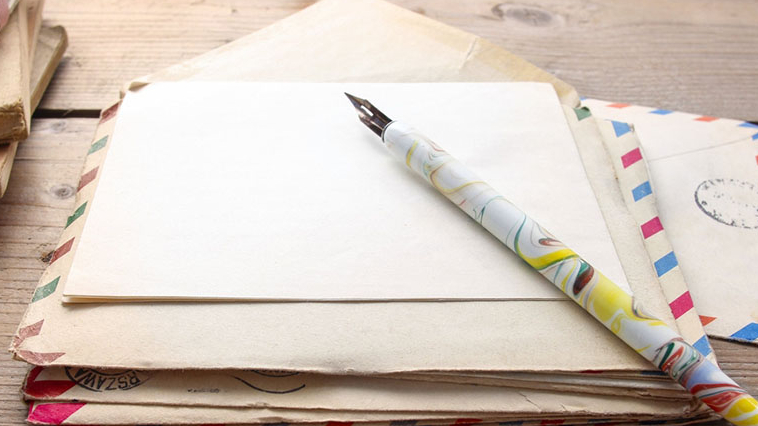The art of handwritten letters

At the risk of sounding like a rampant nostalgic, what we’re lauding this week is putting pen to parchment.
The previous sentence initially read “pen to paper”, but through the magic of technology and a delete key, an alliterative availed itself. See what we did there?
Point is, were this missive being written in the traditional manner, more thought would have to be taken before charging in, lest you make a mistake, think of a better word halfway through the next phrase and have to do the messy crossing out business or reach for the white-out.
The business of ink and paper forces us to slow down in a world that seems to be perpetually in top gear. You trawl through the lexicon with more care and commit the words to paper a little slower than you might on a keyboard because errors have consequences.
The first of these are aesthetic – you want the page to not be besmirched by strike throughs and annotations. Legibility is obviously key, but building on that, your own hand is capable of producing an idiosyncratic elegance no font on a pull down menu will ever match.
Then there’s the time involved. Sure you can bash out a text on the phone using no more than your thumbs and the interval it takes to travel between the train station nearest work and the one closest to your home.
But a letter requires both physical space and enough of a juncture to do the job right. For many, a bit of shoosh is also helpful, quiet giving way to concentration which can cede to contemplation as you submit to the meditative rhythm of nib on A4.
All this inevitably adds to the quality of its contents, while the recipient is presented with prima facie evidence of the effort that you willingly and sometimes even joyfully entered into with them in mind.
Handwritten script has both gravitas and personality. There may be a time in the future when visitors to museums gaze in reverent awe at a framed copy of the email – with BCC list instead of signatures – that certified a presidential impeachment, but we doubt it will have the impact of the Declaration of Independence.
Then there’s the accoutrement of writing. Let’s start with paper, a world unto itself with ivory finishes, wefts and weaves that would turn a haberdasher green and the ability to be embossed with the always impressive “from the desk of”.
Tied with ribbons, they become heirlooms that age with a yellowing grace no back up disk will ever, ever, ever capture.
Can you picture anyone in the future saying to their progeny “and when your nanna signed off her Snapchat to me with this doughnut emoji, that’s when I knew I had a chance”. We think not.
Especially when contrasted with a “yours eternally” and a longing postscript.
Which brings us to pens, heavily lacquered, exquisitely weighted and created to last roughly half a century longer than your average Officeworks printer; the good ones get better with age, they become the instruments of heartbreak, joy, regret and jubilation.
Of course, a keyboard can get you there, but certainly not with the same style. There’s no flourish button on a laptop.
Adding a final touch to the exercise in personalised effort that is the handwritten letter is that you don’t just hit send. A trip to the post office is required, along with the inevitable wait in line as one person fills in their passport application form as another queries why sending a 30 kilogram mirror to Macedonia doesn’t cost less than $10.
Finally, a stamp is procured, you lick the back of Queen Elizabeth’s head and off it goes. Worth every minute of the effort. Just ask whoever’s receiving it.
Written by David Smiedt. Republished with permission of Wyza.com.au.
